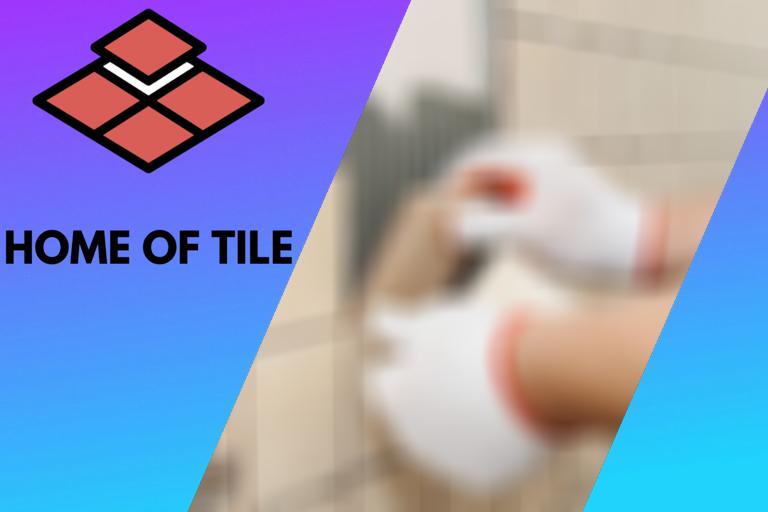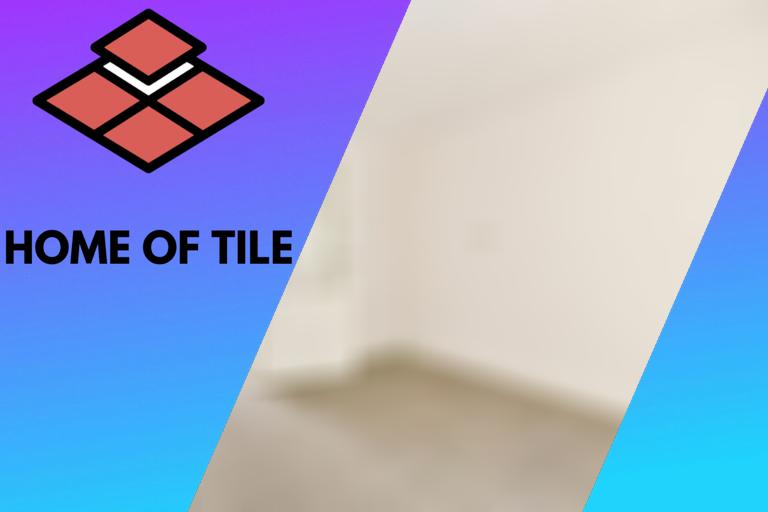Concrete and Tiling: 9 Things You Should Know
Concrete is often used as the material to lay tiles on. It is a strong material that does not need a lot of preparation or other treatment and is often used in combination with underfloor heating. Moisture is always something that needs attention, and an uncoupling membrane between the concrete and the tiles can be necessary. This article will look into the preparation and what to do if the concrete floor needs some repair.

Contents
- 1 How Clean Does Concrete Need to Be Before Tiling? Some helpful tips:
- 2 How to Clean Concrete Before Tiling, some helpful tips
- 3 How to Rough Up Concrete for Tiling, some helpful tips
- 4 Do You Need to Screed a Concrete Floor Before Tiling? Some helpful tips:
- 5 Do You Need to Seal Concrete Before Tiling? Some helpful tips:
- 6 Filling Holes in a Concrete Floor Before Tiling, some helpful tips
- 7 Fixing Cracks in the Concrete Floor Before Tiling, some helpful tips
- 8 Repair Concrete Floor Before Tiling, some helpful tips
- 9 How to Screed a Concrete Floor for Tiling, some helpful tips
How Clean Does Concrete Need to Be Before Tiling? Some helpful tips:
In general, everything on the top of the concrete floor should be removed before tiling. So all loose dirt, but also glue, adhesive, tar, resin, and paint. An extra layer between the thin-set and the floor can affect the bond of the tiles with the floor.
Removing paint from the surface is important because the chemicals in the paint can react with the chemicals in the thin-set. This can affect the bond between the adhesive and the tiles.
If the paint on the surface is well adhered to, then there is no need to remove it. But make sure to remove new paint. The reason is that as paint gets old, it loses the chemicals that react with the thin-set. Therefore, it’s recommended not to use a chemical stripper because of the same reason. Wet the floor because concrete will soak in the water, and any paint that is not well adhered to will be easy to remove.
How to Clean Concrete Before Tiling, some helpful tips
In general, first, clean the floor with a broom from any dust and other loose material. Use a wet mop or sponge to clean the dust or grease stains further. Wait until the floor is dry, then move onto the next step.
● Step 1: Clean the floor with a broom
Before tiling a concrete floor, you must follow some necessary steps for an effective result and cleaning it first. Sweep the floor with a broom to clear it from all the dust and debris. Ensure that you have removed all the dust and debris from the floor and then throw it away by gathering it in a dustpan.
● Step 2: Wet the floor with a mop
In the next step, clean the floor with the wet mop to remove any stains or grease from the surface. Prepare a cleaning solution by pouring a little degreasing cleaner in the water and scrub the floor completely to clean all the stubborn stains.
● Step 3: Let it dry
After cleaning the floor, it’s time to let it dry completely before moving on. You can use a dry towel or cloth to dry the moisture from the floor. If the surface is still damp, then wait for at least 24 hours. You can blow the surface with warm air to get rid of the remaining moisture completely.
How to Rough Up Concrete for Tiling, some helpful tips
Roughing up the concrete surface for tiling can be done through acid etchings or by an angle grinder.
The most important step for preparing a concrete surface for tiling is creating a rough texture on the surface. There are many ways to rough up the surface, like through acid etching or by mechanical means.
Acid etchings are used to remove the laitance and rough up the concrete surface for coating thin-set, primer or for the sealant applications. Acid etchings produces a sandpaper like surface by dissolving cement, but this method is very dangerous and can be hazardous to health. Also, it can be harmful to steel or aluminum; therefore, you need to be careful when working near pipes.
However, instead of acid etchings, you can also use an angle grinder to rough up the concrete. Simply place the grinder on top of the concrete surface and it will allow you to rough up the surface by eliminating the imperfections from the surface. Other than these methods, you can also use mechanical means, like needle scaling, shot blasting, water jetting and scarifying.
Do You Need to Screed a Concrete Floor Before Tiling? Some helpful tips:
In general, it is not compulsory to screed a concrete floor before tiling, but it may become essential under certain conditions. If the structure of your floor isn’t level, it is best to use screed before tiling.
Screed is a similar mixture to concrete but with fewer aggregates. It’s mostly used to make uneven and bumpy surfaces flat, preparing them for tiling, coating, or wood flooring.
Generally, if the flatness of the surface is varying more than 0.2 inches (5 mm) between every 10 feet (3 meters), then you must screed the surface to level it. It would be best to use screed to cover underfloor heating and provide a finished or even surface for your final flooring.
Most of the time, screed is only used for household purposes, like covering heating systems. Screed’s thickness allows it to control the levelness of the foundation on which it is. After applying screed on the surface, you must cover it with the final floor finish because it’s not prepared to act as a wearing surface.
Do You Need to Seal Concrete Before Tiling? Some helpful tips:
In general, it is necessary to seal the floor before tiling. Concrete can expand when it comes into contact with water and thus affect the tiles. A sealing membrane will block moisture from reaching the concrete and act as a water barrier
The more moisture produced creates distortions and larger spacing within the concrete, decreasing its strength and durability. Also, due to lack of air circulation, when humidity reaches the concrete floor, the PH level, and the concrete temperature increase. This affects the strength of the thin-set that was used to install the tiles.
Elastomeric and crack-prevention membranes are the best sealing mortars to seal concrete floors because concrete expands differently from the thin-set mortar. These sealing membranes block the moisture from getting to the concrete. Thus, the sealant acts as a water barrier that helps the adhesive maintain its grip on the tiles.
Filling Holes in a Concrete Floor Before Tiling, some helpful tips
In general, clean the holes you want to fill from dust. Add some moisture to them using a wet mop so that the concrete cannot affect the compound filler by absorbing the moisture from it after applying. Fill the holes with compound using a trowel and level it with the concrete surface.
Holes and cracks in the concrete floor can cause cracks in the tiles when pressure is applied to them; therefore, it’s essential to fix these holes before tiling. Filling these holes can be time-consuming, but it will save you a lot of time and money in the long run because you won’t have to fix them later.
Firstly, clear the holes from all dust and debris. This is important because dust keeps the compound from setting correctly in the hole. Also, concrete is absorbent and will absorb all the moisture from the filling compound, affecting its bonding strength. So, make sure to wet the hole with a sponge before filling it. It will give the concrete enough moisture so that it won’t take the moisture from the compound.
Then mix the compound according to the manufacturers’ instructions, or you can use the pre-mixed concrete patch. Then apply the compound filler in the holes using a trowel and fill it until it is level with the surface using the flat side of a trowel. To ensure it is level, scrape the excess compound from the surface using the same trowel.
Fixing Cracks in the Concrete Floor Before Tiling, some helpful tips
In general, the procedure for fixing cracks is almost similar to fixing holes. Mix the thin-set and then apply it in the cracks using a trowel or by your fingers, depending upon the size of the cracks.
The strength of the tiles largely depends upon the subfloor on which they are laid, so try to repair all the cracks on the surface before tiling. If you install tiles over a cracked concrete surface, then eventually, cracks will also appear in the tiles.
Firstly, to repair these cracks, mix the thin-set according to the instructions and apply it to the small cracks using your fingers. Wear gloves to protect your skin and run your finger over the cracks. In the case of bigger cracks, fill them using a trowel. Scape the excess filler with the trowel, and smooth the filler flat using the flat side of the trowel. Allow the filler to dry, and if it appears to be dripping from any area, apply more filler to that area and allow it to dry. After the cracks are repaired and dry, cover them with polyurethane sealant to prevent moisture.
Repair Concrete Floor Before Tiling, some helpful tips
In general, remove all the adhesive residue and clean the floor from dust and debris. Fill all the holes with compound filler. The result should be a clean and flat concrete floor.
Repairing a concrete floor before tiling helps to achieve a great result. These are the steps:
● Step 1: Remove the adhesive residue
Before tiling, you need to prepare the concrete surface to make it suitable for tiling. Remove all adhesive residue from the surface and completely clean it from dust and debris. Before tiling any surface, it’s recommended that you seal it to prevent it from coming into contact with moisture, which can affect the adhesive’s ability to maintain its bond between the tiles and the surface.
● Step 2: Fill the holes with compound filler
Next, mark all the cracks and holes on the surface and fill them using a compound filler. Fill the holes to the top using a trowel, then use the flat side of the trowel to smooth the filler flat with the surface. Fill small cracks using your finger and bigger cracks with a trowel.
How to Screed a Concrete Floor for Tiling, some helpful tips
To separate the screed from the floor, lay PVC sheets on the concrete surface. Overlap the sides of the sheets with each other using tape. Prepare the screed by mixing it with water and spread it onto the surface using a trowel. It’s recommended to make equal quadrants and put the batten between two quadrants. After applying enough screed on the concrete surface, level the screed using the straight edge, then remove the batten and fill in the gaps.
Installing screed over concrete floor provides a smooth and strong surface for tile installation. It protects the surface from moisture and other issues. Begin your project by cleaning the concrete surface from all the dust so that the screed settles on the floor perfectly, and then follow the steps as discussed.








